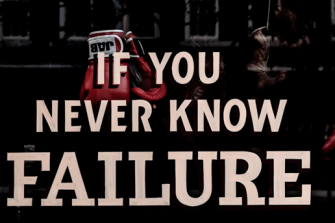So common, in fact, that this has become a form of conventional wisdom. Behind these cute descriptors is a central requirement of effective governance—that boards [collectively] and directors [individually] must be constantly alert to changes in the operating environment of their organisations that might suggest, for example, possible danger or emerging opportunities.
Why do so many independent reviews of organisational negligence refer to the boards of these organisations as having been ‘asleep at the wheel’? There can be only one reason—that the boards and their members have not been exercising a primary responsibility of directorship: to be alert to signals, even faint ones, that might be significant.
We like the analogy of the mother of a young child who can sleep through all sorts of noises at night but who will awaken the instant her baby cries, even in another room. As Colin Sworder wrote about this phenomenon, “…it is not the decibel level; it is the importance of the information that wakes her”. [1]
Here we describe some actions boards might take to ensure that they are better tuned into and can make sense of the operating environment of the enterprises for which they are responsible. But first, some preliminary observations.
Full time accountability
The starting point is to consider how directors think of their roles and responsibilities. Is it just a matter of turning up to a board meeting after a cursory review of the agenda and associated papers, making a few obvious comments, nodding wisely, and then turning off again when the meeting is finished until the next time?
This might seem a somewhat caricatured description, but it is not far from the mark in too many cases, including among some so-called ‘professional’ directors. At first glance, a board role might look like a very part-time job, but accountability for enterprise wellbeing is full-time. As a director, you can never be off duty.
Leadership complementarity
Our thinking about this starts with Robert Greenleaf’s proposition that an organisation needs two complementary kinds of leadership:
Institutions need two kinds of leaders: those who are inside and carry the active day-to-day roles, and those who stand outside but are intimately concerned, and who, with the benefit of some detachment, oversee the active leaders. These are the trustees. [2]
‘Intimate concern’ coupled with the ‘benefit of detachment’ creates the potential for a board to add real value to corporate performance and well-being. Greenleaf’s point is that board members can play a role (given strong motivation) that the inside leaders (ie, the senior executives) cannot because they are too close to and too involved in daily operational action.
In some respects, this potential is evident for other reasons, as long as there is reasonable diversity around the table. In addition to their relevant experience and capability, ‘outside’ directors have their own contacts, which means they are inherently a vital part of the organisation’s intelligence-gathering network. Boards must hold themselves accountable for adding value to and for the organisation’s internal leaders.
Recognising the importance of beliefs
Beliefs and assumptions can close our eyes to information that would alert us to threats and opportunities. In the crying baby example, the overly tired mother has sensory blindness to insignificant sounds. Likewise, the father lying beside the mother may remain deeply asleep when the baby cries because he believes she will wake up.
These are potential blind spots. The problem is that we don’t know we have them. So, diversity in board membership is vital. Effective board processes will also help bring potentially important information, beliefs and assumptions to the consciousness of all board members. Without the opportunity to recognise and challenge particular beliefs, boards can be blind to opportunities that may have been in reach all the time and to existential risks that were just around the corner.
The attribute of discernment
What matters most? It is up to boards to gather and “…sift through information, read signals, pay attention to cues and clues, and ultimately discern what really matters”. [3] The problem is, however, that far too many boards work only from information their managers have presented to them and deal with it only according to how management has framed it for them. That framing invariably constrains subsequent board discussion.
Contrary to how most directors think of themselves—as problem-solvers—Michael Roberto advocates that boards think of themselves more as problem-finders. [4] One consequence of leaving problem-finding to management is that internal issues, in particular, are filtered and tend to remain hidden.
What steps should we take?
While agreeing that “learning to spot [important] issues is more a matter of cultivating awareness than instituting procedures”, [5] there are processes that can help boards be more effective in identifying and addressing the matters they should understand and ensure are in their sights.
- Ensure you have the right people on board. A diverse group, as advocated above, should, according to Roberto, have the following three mindsets: intellectual curiosity, systemic thinking, and healthy paranoia. [6]
- Plan to allow sufficient time for the board to have the kind of interactive unscripted conversation needed to share information and intuitive assessments of the changing operating environment—comparing notes, for example, about ‘What is happening out there?’ and ‘Why does it matter?
- Develop a board workplan that identifies and schedules consideration of matters that would most benefit from the board’s time and attention. Boards must constantly fight against the pressures that result in them being bogged down in business as usual. To identify topics most likely to benefit from board consideration and direction, explore with board members, staff supporting the board, and perhaps a selection of external stakeholders, answers to questions like: ‘What three topics should be high on the board’s agenda over the next 12-18 months?’ then have the board prioritise and sequence discussion on those it considers are likely to be most consequential.
- Acknowledge the world is dynamic and unstable and give a formal place on every meeting agenda to an assigned period for problem-finding and environment sensing. Call it something like the ‘Radar Screen’ discussion (What are the new blips on our radar screen? How far away are they? How quickly are they moving? What do we need to pay particular attention to at this time?). This is a great conversation near the start of the meeting to get the board’s ‘strategic’ juices flowing and reduce the chance of the meeting getting bogged down in board administration and operational ‘weeds’. Assign directors by rotation to take their turn at kicking off this discussion and expect all directors to be prepared to contribute to the intelligence-gathering process. This forces them to keep thinking about the organisation between meetings.
- Invite guests (eg, key stakeholders or critics) to board meetings to share their thoughts or join a discussion with the board on a particular topic, remembering Greenleaf’s view that it is the board’s unique value to be able to bring the outside world into the board’s dialogue. A variation would be a board lunch or dinner with similar participants or another board with which sharing respective views of the world would be valuable.
- Commission and discuss think pieces on specific topics that might evolve out of the development of a board workplan or a radar screen discussion.
- Ensure that assumption testing is an explicit component of decision-making. [7] Also, apply Roger Martin’s test (‘What would need to be true … for this proposal to succeed?’).
- Check if there are any filters and framing that may be distorting the reality facing the board and the organisation. [8]
Be aware of potential impediments
Don’t underestimate the challenges involved in rising to a higher plane of engagement in value-adding board work. For example, we regularly come across the following barriers to boards developing a sustained strategic thinking practice:
- directors not selected for their ability to contribute to an intellectual process that seeks to understand the organisation’s operating environment and to define a ‘big picture’ future
- misplaced assumptions about the board’s role. These include thinking that it is to oversee (ie, react to) staff initiatives and be a vehicle to ensure compliance alone rather than to specify a desired future (eg, determining corporate purpose and defining related outcomes) and ensure performance expectations are fulfilled.
- directors not formulating the questions that will enable the board to engage in meaningful strategic dialogue. They cannot truly give direction to their enterprises.
- directors not fully understanding the business or the external operating environment. They fear that their ignorance will be exposed, and they will be judged negatively by their peers if asked to participate freely in strategic dialogue.
- if statements of strategic direction do exist (eg, a ‘strategic plan’), they are not enough to progress further strategic dialogue.
- chief executives encouraging their boards to ‘steer looking in the rear vision mirror’ by reporting in detail against past actions rather than on their future implications and advising on the possibilities for future initiatives
- a misplaced belief that strategic thinking is for ‘strategic thinkers’, that it is an esoteric, academic pursuit, not ‘real work’ for a board.
Notes
- Colin Sworder, ‘Hearing the baby’s cry: it's all in the thinking.’ In Bob Garratt (Ed.) Developing Strategic Thought. London, McGraw-Hill Book Company, 1995. Pages 71-79.
- Robert K Greenleaf (1977) Servant Leadership. New York, Paulist Press. Page 40.
- Cathy A Trower (2013) The Practitioner’s Guide to Governance as Leadership. San Francisco, Jossey-Bass. Page 132.
- Michael A Roberto (2009) Know What You Don’t Know. New Jersey, Wharton School Publishing.
- Richard P Chait, William P Ryan and Barbara E Taylor (2005) Governance as Leadership. New Jersey, John Wiley & Sons. Page 110.
- Roberto, op cit, Chapter 9.
- Roberto (op cit, p.85) suggests 7 key questions to assist in scrutinising assumptions. We suggest another aspect of this scrutiny should be an attempt to identify beliefs that may be creating blind spots.
- We will explore this in more detail in the next issue of Good Governance.








